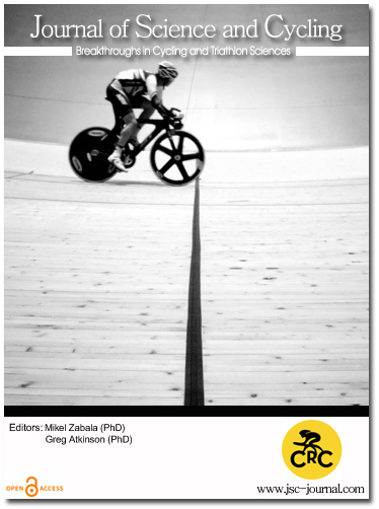Kinematics, muscle recruitment patterns and pressure mapping in cycling biomechanics - Recent research findings and practical outcomes.
Abstract
Objectives: With the increase in popularity of cycling, a properly configured bicycle is essential for maximizing performance and preventing injuries, whilst maintaining comfort. It has been suggested that cyclists train in the same conditions that they would race in, optimizing the muscle coordination patterns used during competition. For this reason, it is important to understand both the bicycle setup and the riders position at different intensities.
One of the key measurements conducted during bike-setups is the static or dynamic measurement of knee flexion angle. We previously demonstrated that there is a significant change in knee, ankle, hip and shoulder angle from static to dynamic measurements. This change during cycling may have an effect on the cyclists’ performance, economy and injury risk. Other factors to consider are fatigue and workload intensity, and how these may impact on the riders’ position and muscle recruitment patterns. Comparing pressure load and distribution in various saddle zones, through a range of workloads, may give a better understanding to genital discomfort and optimisation of saddle positioning.
Methods: Seventeen well-trained cyclists (Age 31±9years, Mass 75.5±7.5kg PPO 354.0±34.5) were enrolled for the study. Whole body kinematics and EMG patterns were analysed during a steady state cycle at 60% VO2 max, and at 60, 80 and 90% heartrate intensities. Saddle pressure was also recorded at 60, 80 and 90% heartrate intensity.
Results: There were no changes in body joint angles nor muscle recruitment patterns during the steady state cycle. There were significant changes in the ankle, knee, elbow, thoracic and lumbar flexion angles with increasing intensity (see Figure 1). There were also significant changes in the EMG patterns of the cyclists for all muscles except Medial Gastrocnemius (see Figure 2). The saddle pressure data demonstrated significant changes in the loaded area and mean force through different areas of the saddle.
Conclusion: As previously suggested, compensatory lower limb kinematics occur in order to maintain a given power output. For riders that will be training at these specific intensities it would be beneficial to have their bike setup done taking the kinematic changes into account.
Downloads
Published
How to Cite
Issue
Section
Copyright (c) 2020 Journal of Science and Cycling

This work is licensed under a Creative Commons Attribution-NonCommercial 4.0 International License.
Authors contributing to Journal of Science and Cycling agree to publish their articles under a Creative Commons CC BY-NC-ND license, allowing third parties to copy and redistribute the material in any medium or format, and to remix, transform, and build upon the material, for any purpose, even commercially, under the condition that appropriate credit is given, that a link to the license is provided, and that you indicate if changes were made. You may do so in any reasonable manner, but not in any way that suggests the licensor endorses you or your use.
Authors retain copyright of their work, with first publication rights granted to Cycling Research Center.






